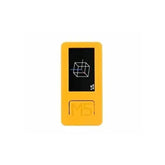Maximizing Drone Flight Range: Key Tips

Understanding the Factors Influencing Drone Flight Range
Several interrelated factors determine the flight range of a drone. By comprehensively understanding these elements, users can make informed decisions and optimize their drone’s performance.
The design and aerodynamics of a drone significantly impact its flight range. Drones come in various designs, including multirotor, fixed-wing, and hybrid models.

-
Multirotor Drones: These are popular for their stability and ease of control but generally have shorter flight ranges due to the energy required to keep multiple rotors aloft.
-
Fixed-Wing Drones: These are more efficient for long-distance flights as they glide through the air, reducing energy consumption. However, they require more space for takeoff and landing.
Battery Capacity and Technology
The type and capacity of a drone’s battery are pivotal in determining how long and how far it can fly. Modern drones typically use lithium-polymer (LiPo) batteries, known for their high energy density and lightweight.

-
High-Capacity Batteries: Larger batteries can store more energy, extending flight times. However, they add weight to the drone, which can offset some of the benefits.
-
Battery Technology Advancements: Innovations in battery technology, such as lithium-sulfur or solid-state batteries, promise to offer higher energy densities and longer flight ranges in the future.
Environmental Factors
Environmental conditions can either enhance or hinder a drone’s flight performance.

-
Wind: Flying with a tailwind can extend flight range by reducing the energy required to maintain speed. Conversely, flying into a headwind increases energy consumption.
-
Temperature: Batteries perform optimally within specific temperature ranges. Extreme cold can reduce battery efficiency, while high temperatures can cause overheating and damage.
-
Altitude: Higher altitudes with thinner air can reduce aerodynamic drag, potentially extending flight range, but can also affect lift and control.
Payload and Weight Management
The payload, which includes cameras, sensors, and other equipment, directly impacts the drone’s flight range.

-
Smooth and Steady Flying: Avoiding aggressive maneuvers and maintaining a consistent speed can conserve battery life.
-
Optimized Flight Plans: Pre-planning flight routes to avoid unnecessary altitude changes and sharp turns can maximize efficiency.
Practical Tips to Extend Drone Flight Range
Pre-Flight Preparations
-
Battery Maintenance: Regularly check and maintain batteries, ensuring they are fully charged and in good condition.
-
Firmware Updates: Keep the drone’s firmware updated to benefit from the latest efficiency improvements and features.
-
Weight Optimization: Carefully plan the payload, removing any non-essential items to reduce weight.

In-Flight Strategies
-
Use Range Extenders: Devices like signal boosters can enhance communication between the drone and its controller, allowing for longer distances.
-
Leverage Environmental Conditions: Fly with tailwinds when possible and avoid extreme weather conditions that could hinder performance.
-
Monitor Battery Levels: Keep a close eye on battery levels and plan for a return trip with adequate power reserves.
-
Efficient Flight Patterns: Plan flight routes that minimize energy expenditure, avoiding unnecessary altitude changes and sharp turns.

Conclusion







Leave a comment
All blog comments are checked prior to publishing